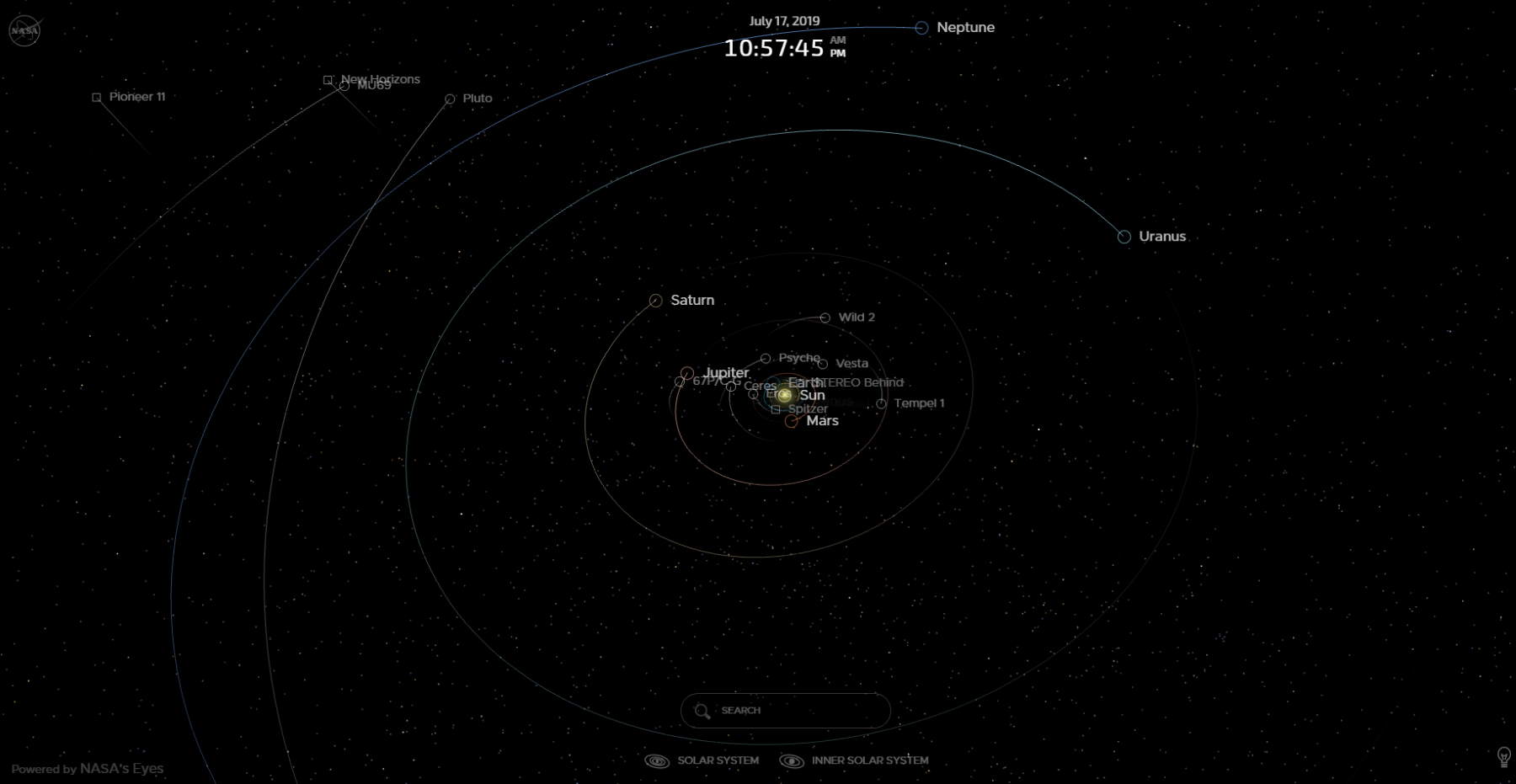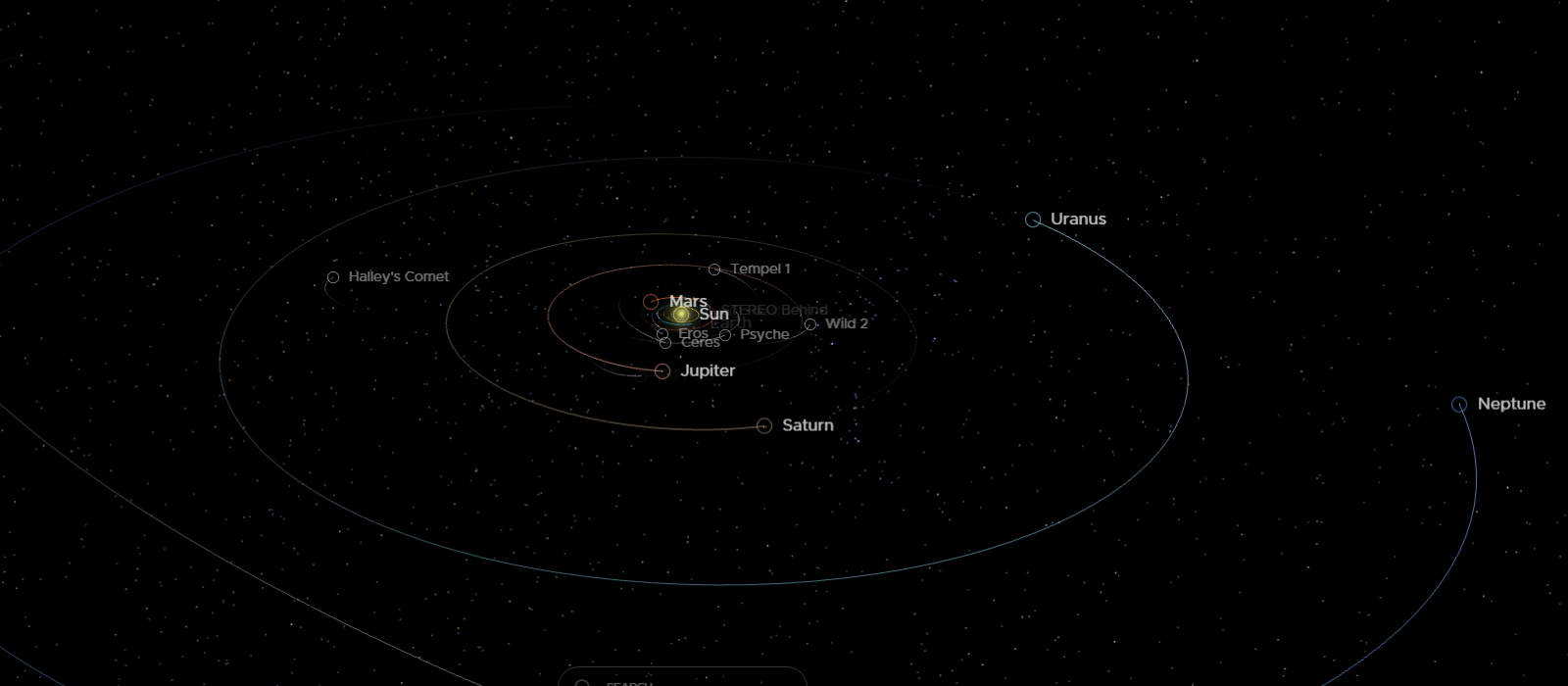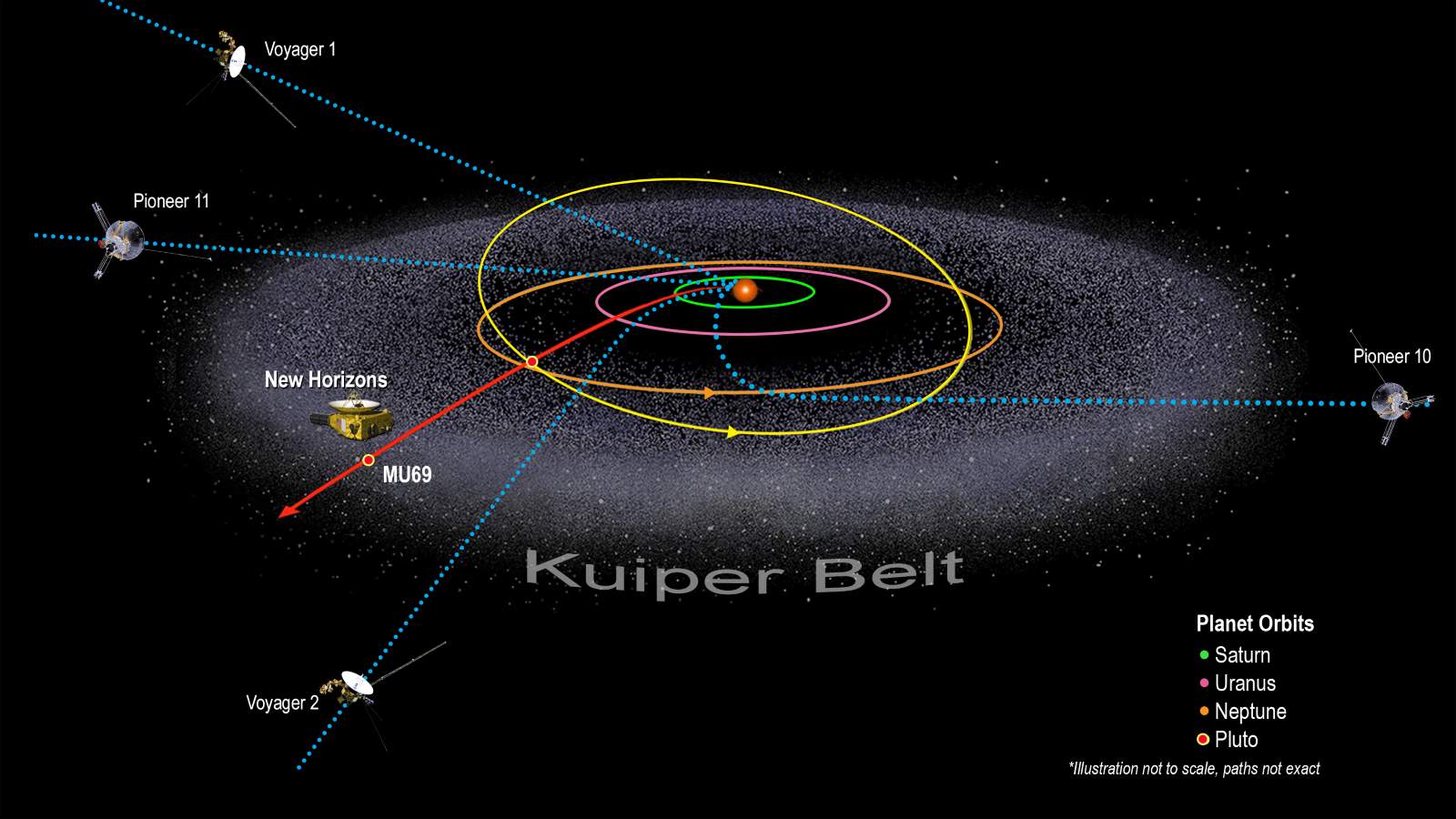To see exactly where the spacecraft and the celestial bodies (planets and other astronomical objects) really are, right now, you can use NASA’s real-time, 3D solar system model.
You can access the real-time, 3D animation of the solar system on the NASA Eyes website (eyes.nasa.gov).
There is also a search option. You can find the object you are looking for by searching its name (for example, Voyager 1, Pluto, Pioneer 10, etc).
A screenshot from the animation, showing planets and Pioneer 11 and New Horizons spacecraft is below.

To see the animation, click here.
The info about the animation on the NASA/JPL Eyes page:
Your Galactic Neighborhood
This simulated view of our solar system runs on real data. The positions of the planets, moons, and spacecraft are shown where they are right now. This digital orrery is a light, mobile-friendly version of NASA’s Eyes software. Download the full, free program for an even more immersive experience.
This snapshot of our solar system focuses on active NASA planetary science missions and select ESA missions. Showcasing the entire operating NASA fleet is too much of a data wallop at the moment (but we are working on it). International missions such as Japan’s Akatsuki (orbiting Venus) and ESA’s BepiColombo (en route to Mercury) are not yet available.
To see exactly where the spacecraft and the worlds they’re exploring *really* are, use our real-time, 3D solar system model available in the top menu of https://t.co/CPHjQD2MtZ. Direct link: https://t.co/2Lpi1vf203 pic.twitter.com/FilFiGZpjB
— NASA Solar System (@NASASolarSystem) July 17, 2019
- Moon Landings: All-Time List [1966-2025] - February 2, 2025
- What Is Max-Q and Why Is It Important During Rocket Launches? - January 16, 2025
- Top 10 Tallest Rockets Ever Launched [2025 Update] - January 16, 2025

